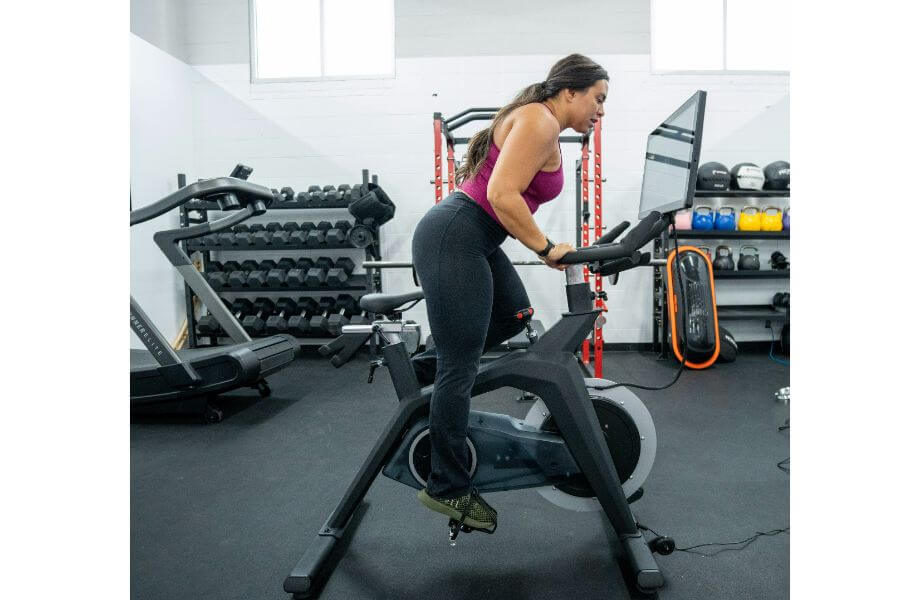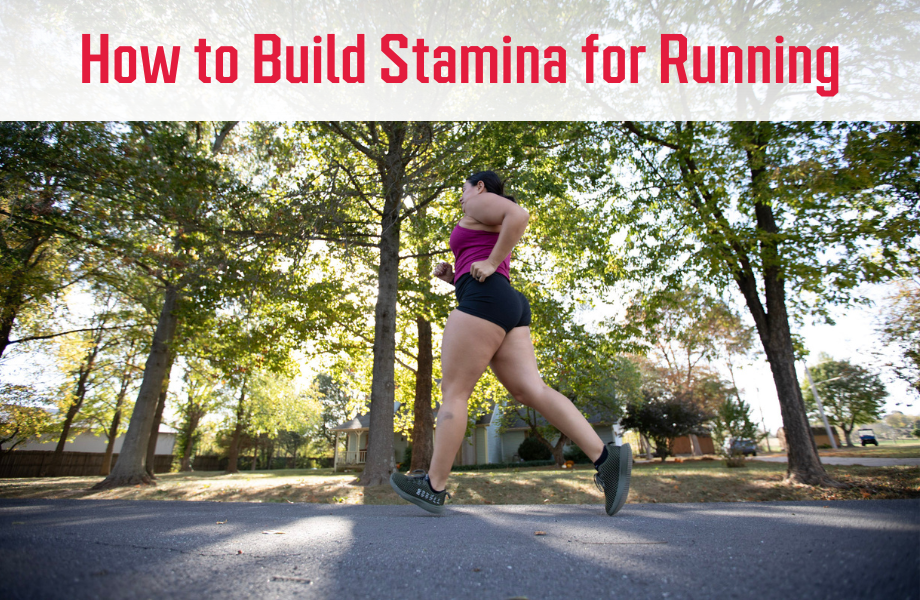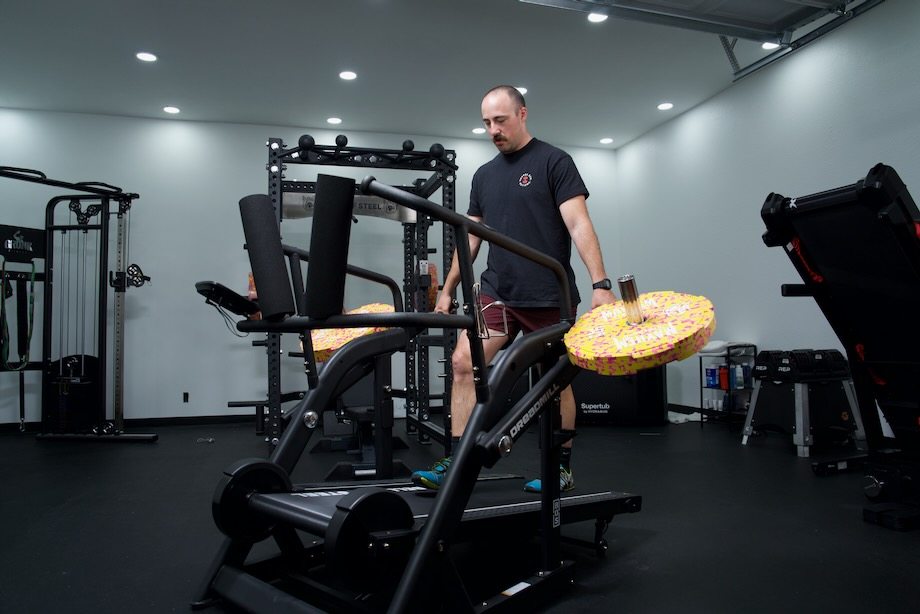I might be a little biased, but I think running is a pretty awesome workout. Every mile inspires the best in us, and I don’t mean that in the way you might think. Yes, getting stronger and running faster is a great way to measure progress, but I’m talking about the personal growth that comes with facing a challenge head-on. We’ve all had the “Wow, I just did that!” feeling as we finished a tough run. Oftentimes, it sneaks up on you because the grind to get there can be TOUGH.
The success of today’s run is in debt to your past runs (even the ones that sucked). Success doesn’t happen overnight. Building stamina takes time and commitment, whether you’re just starting or you’ve been in the game for a while. And although it may feel like you’re only inching toward your goals as you build endurance, one day you’ll cross the finish line and know it was all worth it.
So, if you’re wondering how to build stamina for running, we’ve got your back with some actionable tips. I’m a certified personal trainer, and I’ve asked a few of my expert friends to weigh in, too. Let’s dive in.
Why Does Building Stamina Matter?
You’ve probably heard the quote “The best things in life are worth waiting for,” or at least something of the sort. Even in the age of instant gratification (looking at you, social media), I think most of us would agree with that statement; putting in the work makes the end game that much sweeter.

Stamina is the mental and physical ability to maintain activity for an extended period of time. Building stamina is vital for a runner, no matter their fitness level. Your body has to meet the physical demands of running while juggling the mental load of doubt, fatigue, and frustration. It might not be easy at first, but as you build stamina, your body and mental strength adapt. You can push yourself to the next level as your body and confidence grow stronger.
9 Tips for Building Running Stamina
1. Run Longer Distances
Long runs aren’t just for marathon training anymore! Even if you don’t consider yourself a distance runner, adding a few longer runs to your training schedule can help you build endurance. In addition to increased endurance, long runs also help your muscles, bones, and joints adapt to the constant pounding that comes with running.
The ideal long run will vary in distance between runners. Consider increasing your long run by 5-10 minutes each week to gradually increase your mileage. If you’re training for a full or half-marathon, the mileage for your long-distance runs might gradually ramp up to double digits. Find what works best for you, but remember to increase your distance gradually.
2. Train Consistently
Unfortunately, there’s no magical way to build stamina overnight. We have to be consistent with our training and lace up our running shoes day in and day out. Consistency helps increase your aerobic capacity, or how much oxygen your muscles can use, and it also helps build muscle and improve endurance.
Consistency doesn’t necessarily mean running every day. Developing a training program tailored to your goals and fitness level can help keep you on track. An all-inclusive training plan can include steady-state cardio, strength training, and recovery.
3. Recover Properly
Our bodies are not designed to go, go, go all the time; they need time to recover. Your body breaks down when you push it past its physical capacity, but it can repair itself during recovery, leading to endurance gains.
So allow your body time to repair. Stretch before your workout and during your cool down, use a massage gun or roller, and take a day off when needed.
RELATED: Post-Run Stretches

And most importantly, get adequate sleep. Listen, I totally get it. There’s just not enough time in the day to get everything done. But if you skip something on the to-do list, don’t let it be your precious zzzz’s.
4. Fuel Well
Fueling your body is like putting gas in a car, and just like your car can’t run on an empty tank, neither can you. So nutrition is critical whether you’re training for ultras, marathons, a 5K, or to improve your overall wellness. Make sure you’re meeting your carbohydrate, protein, and fat needs through consistent nutritional intake.
Carbs will serve as your primary energy source, but your body can rely on fat for fuel when your glycogen stores are depleted. On the other hand, protein helps repair muscle damage incurred during your workout. Important stuff.
And, of course, remember to hydrate. Hydration is key to mental and physical performance, so be sure to replace the fluids that you lose via sweat.
5. Work on Form
Maintaining good running form can help you run faster, more efficiently, and more comfortably. On top of that, it helps reduce the risk of injury. So, what does proper running form look like?
- Look ahead. Try to look at the ground 10 to 20 feet ahead of you.
- Relax your hands. Imagine holding an egg in each hand, and you don’t want to crush them. While you’re at it, relax your shoulders too.
- Don’t slouch. Keep your posture straight.
- Drive your arms from your shoulders (not your elbows), and avoid swinging them side-to-side. You don’t want to waste energy swinging them left and right.
- Don’t bounce. Run lightly and land softly.
- Keep your stride underneath you. Running is a pushing motion, so aim for a mid-foot strike and let your quads do most of the legs’ work. If you overextend your stride, your heel will strike first, and your hamstrings will have to pull you forward, which is less efficient.
“Practice striking your foot directly under your hip,” says Jacob Penner, a high school middle distance runner and state champion. “Record yourself from the side and see if you’re striking in front or directly underneath the hip.”
When we fatigue, our form tends to break down, so the more consistently you run with proper form, the easier it will become and the less you’ll have to think about it.
6. Incorporate Easy Runs
The key to a successful easy run is actually taking it easy. The steady-state, easy runs are equally crucial to building running endurance as those hard-hitting workouts.
If your body needs a break from running, you might consider cross-training instead of scheduling an easy run. Swimming and biking are the most popular forms of cross-training, but there are several low-impact options to get you moving.

7. Make Speedwork and HIIT Your Friend
Distance runners get plenty of steady-state cardio, but speed work and high-intensity interval training are important too. For example, you might start by running a few strides at the end of one of your mileage runs. Then you can work your way up to sprint intervals or even hill intervals.
A running coach or certified personal trainer can help design a speed or interval workout that engages those fast-twitch muscles and meets your specific training needs.
8. Incorporate Tempo Runs
Fartleks, interval training, and tempo runs all have a place in building running stamina, but of the three, tempo runs are particularly effective. This is because they usually cover a shorter distance than your typical mileage runs but are run at a faster pace than your regular cadence.
Tempo runs aren’t asking you to run at an all-out sprint or even at your race pace. Instead, you should aim to maintain a pace that’s approximately 70% of your max effort.
Try for one tempo run each week and aim to get faster each time. These short, powerful runs can help increase your physical capacity on your long runs—a 2021 Journal of Strength & Conditioning Research1 study found that tempo and short interval training runs were integral in improving performance in world-class long-distance runners.
9. Add Strength Training
Last but not least, building strength is essential when increasing your running stamina. When we think about running, we usually think about building strength in our legs, but efficient running form also needs a strong core and upper body.
“Endurance athletes need to incorporate cross-training—specifically strength training—to help them become better runners,” GGR editor and certified personal trainer Amanda Capritto says. “Building total-body strength can help prevent injuries and improve performance.”

In fact, a 2016 meta-analysis in the Journal of Strength & Conditioning Research2 found that runners who incorporated two to three strength training sessions per week improved their running economy.
Bodyweight exercises such as push-ups, squats, and walking lunges are all effective ways to build strength, but consider picking up some weights as well. Plyometrics (think squat jumps, burpees, jumping lunges, etc.) are also a great way to build some serious muscle power and get that heart rate going.
Final Thoughts on How to Build Stamina for Running
Challenging yourself on a run often involves a test of your stamina, but pushing through and building on that stamina is pretty dang satisfying. Whether you run ultras, marathons, or a couple of laps around the neighborhood, growth in your training takes physical and mental stamina. Most importantly, remember that your running journey is YOURS. So enjoy it and be proud of yourself every step of the way.
- Several factors are necessary to build stamina for running.
- Consistency is key. Consider developing an individualized training program with your running coach.
- Incorporate long runs, tempo runs, fartleks, HIIT, and strength training to build your cardiovascular system and muscle strength.
- Recovery is a crucial aspect of reaching your fitness goals. Your body requires time to repair itself after experiencing the stressors of building stamina.
- Maintain well-balanced nutrition and prioritize hydration.
- Focus on proper running form. Keep your posture straight, shoulders and hands relaxed, and core engaged. Drive your arms from your shoulders and keep your stride underneath you.
How to Build Stamina for Running FAQs
How do beginners build stamina for running?
If you’re a beginner runner, start with one or two weekly runs to allow your body to adapt to the different training. Then, as your running stamina improves, you can gradually increase your frequency.
You can do the same with running distance. First, gradually increase the length of one of your runs until it becomes manageable. Then, increase the other runs in your week’s schedule.
How long does it take to build stamina for running?
If you’re in the beginning stages of your training, you may notice physical changes within 4-6 weeks. However, experienced runners may not notice significant changes until much longer.
Does running faster build stamina?
Running faster will increase your V02 max, or the maximum rate at which your body can use oxygen during exercise. Increasing your V02 max means running at a slower pace will feel more manageable. Running workouts such as fartleks, increasing your speed in short bursts, will get your heart rate up and your legs moving.
How can I improve my running stamina in two weeks?
Building stamina takes time. While it’s not likely that you’ll see significant improvements in your running stamina over the course of two weeks, you may notice slight changes. During the first two weeks of your training schedule, start by consistently training. Developing those habits early on sets the precedent for success. Also, make sure you in\corporate recovery, proper nutrition, and strength training if you aren’t already.
References
- Balsalobre-Fernández C, Santos-Concejero J, Grivas GV. Effects of Strength Training on Running Economy in Highly Trained Runners: A Systematic Review With Meta-Analysis of Controlled Trials. J Strength Cond Res. 2016 Aug;30(8):2361-8. doi: 10.1519/JSC.0000000000001316. PMID: 26694507.
- Casado A, Hanley B, Santos-Concejero J, Ruiz-Pérez LM. World-Class Long-Distance Running Performances Are Best Predicted by Volume of Easy Runs and Deliberate Practice of Short-Interval and Tempo Runs. J Strength Cond Res. 2021 Sep 1;35(9):2525-2531. doi: 10.1519/JSC.0000000000003176. PMID: 31045681.







